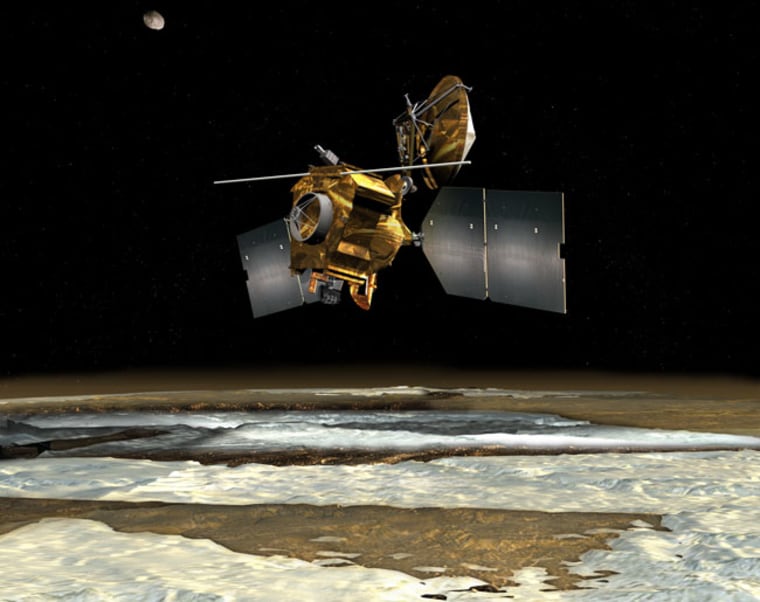A powerful NASA spacecraft around Mars has bounced back yet again Saturday, resuming its study of the Red Planet three days after a recurring computer glitch temporarily waylaid its mission.
The Mars Reconnaissance Orbiter started gathering science data again on Sept. 18, NASA officials announced. On Sept. 15, the orbiter put itself into precautionary "safe mode" a sort of spacecraft hibernation after spontaneously rebooting for unknown reasons.
It was the fifth time in two years the MRO spacecraft had experienced computer problems. Before last week's hiccup, the last time the orbiter went into safe mode was August 2009, when it went into a months-long slumber. It was revived in December of that year. [ 10 Things to Know About MRO ]
The Mars orbiter suffered a series of unexpected computer reboots in 2009, putting it into safe mode four times, according to NASA officials. But then, as now, the spacecraft always came back to life.
The $420 million orbiter launched in August 2005 on a mission to look for past and present signs of water and to perform a comprehensive survey of the Red Planet's surface and atmosphere. MRO also serves as a communications link between NASA's Mars rovers Spirit and Opportunity and their controllers on Earth.
The spacecraft has also been helping NASA find the best Martian landing spot for the space agency's next rover, the Mars Science Laboratory Curiosity, which is slated to launch next year.
MRO has generated three times more data than all other deep-space missions those that venture beyond Earth's moon combined.
The orbiter completed the primary science phase of its operations in November 2008, but it continues to observe Mars both for science and to support future landing missions, NASA officials said.
